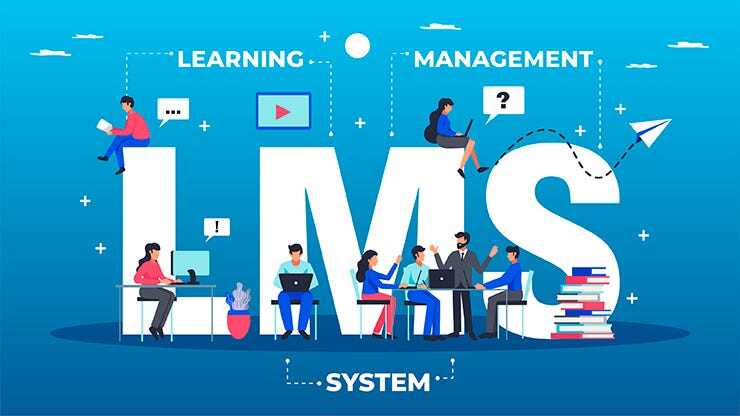Enhancing Education Through Classroom Technology & EdTech Tools
Introduction Remember when classroom technology meant overhead projectors and bulky desktop computers? We've come a long way since then! Educational...
3 min read
 Aria - LATechNet Team
:
Mar 27, 2025 6:03:52 AM
Aria - LATechNet Team
:
Mar 27, 2025 6:03:52 AM

Over the past decade, digital learning has quickly become a central part of education, changing how students learn and teachers teach. Devices like Chromebooks have played a big role in this shift, entering classrooms everywhere because they're affordable, easy to use, and specifically designed to support online learning. But simply having Chromebooks isn't enough. To truly benefit students, teachers must thoughtfully integrate these tools into their daily lessons. A strategic approach makes sure that technology supports learning goals, encourages engagement, and boosts student achievement. When used effectively, Chromebooks can open up a whole new world of interactive resources, collaborative projects, and personalized learning experiences, helping educators bring out the best in each student.
If you've ever wondered why Chromebooks seem to be everywhere in classrooms, you're not alone! Chromebooks quickly became a favorite among educators because they're affordable, easy to manage, and designed with teachers and students in mind. Even back in 2015, Chromebooks already represented 60% of all educational device sales in the U.S., showing just how rapidly schools adopted them (marketbrief.edweek.org).
One big reason behind this popularity is affordability. Schools can achieve an impressive 229% return on investment when using Chromebooks, thanks to reduced IT costs and infrastructure savings (geteducationtools.withgoogle.com). Plus, Chromebooks come packed with features that teachers love: easy setup, cloud-based apps accessible from anywhere, automatic updates that save time, and centralized management that makes classroom technology easier to handle than ever before.
While Chromebooks offer great benefits, educators often face some real challenges when integrating them into classrooms. One key issue is the limited lifespan of these devices. Chromebooks typically need replacing every few years, creating significant financial burdens for many schools. In fact, extending the life of Chromebooks could potentially save schools around $1.8 billion, money that could otherwise support critical educational resources and programs (edweek.org).
Additionally, frequent Chromebook replacements lead to more electronic waste, raising important sustainability concerns. The rapid turnover of devices contributes significantly to e-waste, impacting our environment negatively. Educators and schools are starting to recognize the importance of sustainability and are looking for ways to responsibly handle or extend device usage (theverge.com).
Integrating Chromebooks into your classroom can be smooth and rewarding if you follow a few clear steps. First, start with strategic planning and infrastructure preparation. Evaluate your school's current wireless networks and infrastructure. Make sure your bandwidth is strong enough for all students to get online without delays, and always prioritize network security to protect students and data.
Next is effective staff training and teacher support. Provide professional development sessions to help teachers feel comfortable using Chromebooks. Remember, ongoing support is key—offer continuous resources and guidance as they blend technology into their lessons.
Creating clear procedures and policies is essential. Outline classroom guidelines for Chromebook use and establish practical rules for maintaining, storing, and securing devices. Additionally, emphasize digital citizenship by teaching online safety, digital ethics, and responsible device use, encouraging students to care for their Chromebooks responsibly.
Finally, leverage tools like Google Workspace to create collaborative learning environments. Encourage students to work together on projects, fostering teamwork through technology.
Tracking student progress is key to knowing if your Chromebook integration is truly effective. Simple assessment tools like Google Forms quizzes or interactive apps such as Kahoot! can quickly show how well students understand lessons. Regularly collecting this data helps teachers spot where students might be struggling and adapt their teaching methods accordingly.
It's also important to listen closely to student feedback. If students express confusion or frustration, educators can tweak their strategies, perhaps by simplifying instructions or offering extra support resources. Schools that regularly adjust their approach based on student performance data tend to see better outcomes overall.
For example, one middle school in Texas saw a significant increase in reading and math scores after adopting Chromebooks. By regularly reviewing student data, teachers made informed decisions, leading to more personalized instruction and improved student confidence and achievement.
Integrating Chromebooks into your classroom may seem challenging at first, but LATechNet makes things easy and stress-free. They specialize in IT consulting and support designed specifically for schools like yours, ensuring you get exactly what you need. Their experts will set up a strong and secure Wi-Fi network, helping your Chromebooks run smoothly without interruptions.
But they don't stop there! LATechNet also offers practical training sessions so teachers feel confident using Chromebooks effectively in their lessons. Plus, their smart approach to device management keeps your Chromebooks healthy and working longer, saving your school money and helping the environment. And, of course, their cybersecurity solutions protect your students' privacy and meet all educational standards. With their continuous support, LATechNet is always there to help you evaluate and improve your Chromebook classroom experience.

Introduction Remember when classroom technology meant overhead projectors and bulky desktop computers? We've come a long way since then! Educational...
The article discusses the importance of setting up a tech help desk in educational institutions to support teachers and students in effectively using...

Learning Management Systems (LMS) have become essential in K-12 education, especially post-pandemic, providing seamless digital learning experiences....